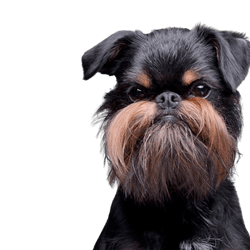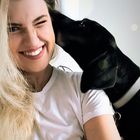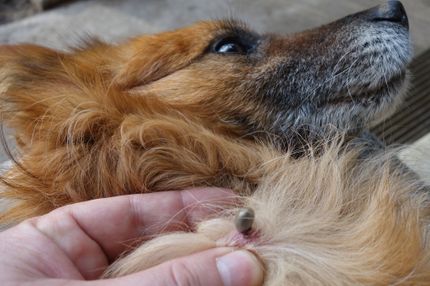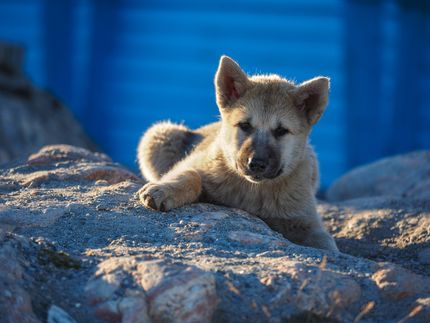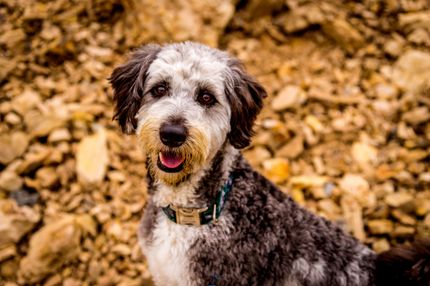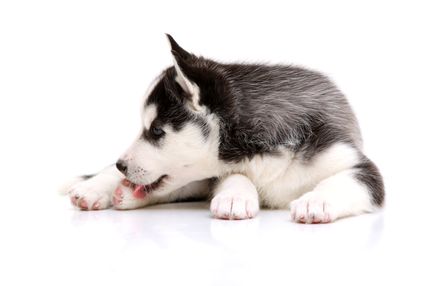Facts & Origin
Griffon Bruxellois and Pug in one
The Brug is a charming and rare designer hybrid breed that is the result of crossing a Pug with a Brussels Griffon. Both parents are small companion dogs with a striking, sometimes almost human-like facial expression and a big heart.
The aim of this cross was to combine the cheerful, even-tempered nature of the Pug with the lively, curious and often clownish personality of the Brussels Griffon. The Brug should be a small, compact and affectionate dog, suitable for both families and individuals - with a special charisma and loving nature.
The targeted breeding of this mix probably originated in the last two decades, primarily in the USA, where interest in small, characterful mixed breeds with a striking appearance grew steadily.
Criticism of the Brug
As with many so-called designer dogs, the Brug has also been criticized, particularly from an animal welfare perspective. Both parents are considered brachycephalic, i.e. short-snouted - which means that the Brug can potentially suffer from breathing problems, eye diseases or heat stress, depending on the distribution of the genetic make-up.
Another point of criticism is the fact that the Brug is not recognized as an official breed, so there are no uniform standards for appearance, health or temperament. This can lead to large differences between individual dogs - and makes it difficult for future owners to rely on certain characteristics.
The commercial marketing of this mix - often with a focus on cute looks - is also viewed critically, as it sometimes leads to dogs coming from dubious breeds without health care and being placed in unsuitable hands.
Suitability of the Brug
If bred responsibly, the Brug is a loving, affectionate and entertaining companion dog that is particularly suitable for people with a calm, structured everyday life. He loves closeness, attention and fixed caregivers, but is usually not over-excited and can be easily integrated into everyday life.
The playful, sensitive character of the Brussels Griffon and the sociable, friendly nature of the Pug make for a dog that is both sociable and sensitive. The Brug is well suited to older people, couples or families with older children who are looking for a rather quiet but funny little companion.
The Brug does not require excessive exercise, but should still be taken for a daily walk and kept mentally occupied. Due to its compact size and friendly nature, it is well suited to living indoors - provided it is given enough attention and regular grooming, especially for dogs with slightly longer coats.
| Alternate Name | Griffon Pug, Brug Dog, Brussels Griffon Pug Mix |
| Origin | Belgium - China |
| Life expectancy | 12 - 15 years |
| Care requirements | high-maintenance - low-maintenance |
| Activity level | low |
| FCI group | not recognised |
| AKC group | not recognised |
| KC group | not recognised |
More Griffon Bruxellois mixes
More Pug mixes
Attitude, character and temperament of the breed
Possible character traits of the Brug
The Brug is generally a lively, people-oriented and very affectionate little dog. It combines the playful, cheerful nature of the Pug with the intelligent, often clownish personality of the Brussels Griffon - making it an entertaining, charming and loyal companion.
Brugs are usually very affectionate and build a strong bond with their humans. They enjoy being the center of attention and actively seek contact with their family. At the same time, they are often sensitive and delicate, which makes them particularly suitable for quiet households.
They can be both silly and playful, as well as relaxed and calm - depending on their mood on the day and their environment. Many Brugs also have a comical streak, which makes them little entertainers in everyday life. With good socialization, they generally get on well with other dogs and also with cats.
Despite their playful nature, they are not hyperactive dogs, but prefer a balanced daily routine with closeness, activity and clear structures.
Character
Usage
Possible diseases of the Brug
As both the Pug and the Brussels Griffon are brachycephalic breeds, the Brug can also develop health problems - especially if no emphasis has been placed on a healthy breeding line.
Possible diseases in the Brug:
Breathing problems due to short muzzle and narrow airways
Eye diseases, for example due to protruding eyes or injuries to the cornea
Skin fold inflammation, especially on the face
Dental problems, especially with a narrow jaw
Allergies and sensitive skin
Sensitivity to heat, especially with strong pug embossing
Patellar luxation (dislocation of the kneecap), typical in small breeds
Regular veterinary check-ups, targeted care (especially of skin folds and eyes), as well as an appropriate diet and exercise are important to maintain the quality of life of the Pug in the long term.
This is what a Brug can look like
The appearance of the Brug can vary - as with all hybrids - but is usually somewhere between a Pug and a Brussels Griffon. The dogs are usually small and compact, with a weight of around 4 to 8 kg and a shoulder height of 20 to 28 cm.
The head shape is often roundish, with a short muzzle and large, dark eyes. Depending on the genetic characteristics, the ears can be erect, slightly protruding or drooping. The facial expressions are particularly striking: Brugs often have an expressive, almost human facial expression, which makes them so unmistakable.
The coat can be either smooth and short (like the Pug) or rough and slightly shaggy (like the Griffon). Mixed coat types may require regular grooming or trimming. Colors range from beige, black, brown, gray to reddish, often with a dark mask or shading.
Overall, the Brug comes across as a small head of character whose charm lies not only in its appearance, but above all in its behavior - playful, affectionate and full of personality.
Known Diseases
Patellar problems
Problems with the Patellar can be a displacement or weak kneecap, which is one of the most common causes of lameness in dogs, also because of overweight.
Eye diseases
Often occur with allergies and intolerances.
Spinal disorders
However, as the dog ages, this elasticity can be lost and completely inhibited by diseases such as spondylosis.
Breathing problems
Dogs with shortened muzzles can often experience respiratory problems.
Hip dysplasia (HD)
Hip dysplasia (HD) is a genetic condition in dogs where the hip joint is not shaped properly. This leads to pain, stiffness and restricted movement.
Denture malocclusions
Malocclusions of the dentition often occur in dogs with short muzzles.
Shortness of breath
Difficult breathing can be recognized by the dog's rattling and sometimes accelerated breathing rate.
Overweight
Often, unfortunately, the dogs very much under excess weight. But the dogs themselves are never to blame!
Heart disease
Can occur frequently in dogs and can sometimes be treated with medication.
FAQ
-
A Griffon Bruxellois and Pug mix is a small to medium sized dog with a short, strong body. They have a square head with a slightly wrinkled forehead, and their muzzle is short and blunt. The ears are small and erect, and the eyes are large and round. They have a black nose and their teeth meet in an undershot bite. Their tail is either straight or slightly curled, and they have a double coat that is coarse and dense. Their coat can be brindle, fawn or black, and they have a thick mane around their neck.
-
Griffon Bruxellois Pug mixes are friendly and affectionate dogs that enjoy being with people. They are intelligent and playful and make excellent family dogs. They can be quite stubborn at times, but are generally obedient when well trained. They are good watchdogs that will bark to warn you if someone is approaching the house.
-
Brugs need moderate exercise, they like to go for walks and play. They are not particularly active dogs and therefore do not need a lot of space to run around. They can also live in a small house or apartment as long as they get enough exercise every day.
-
Brugs are intelligent dogs that are relatively easy to train. They respond well to positive reinforcement and should be trained with patience and consistency. They can be stubborn at times, but they will eventually learn what you want them to do if you are firm and consistent with your commands. Socialization is also important for this breed, and they should be introduced to new people and animals at a young age.
